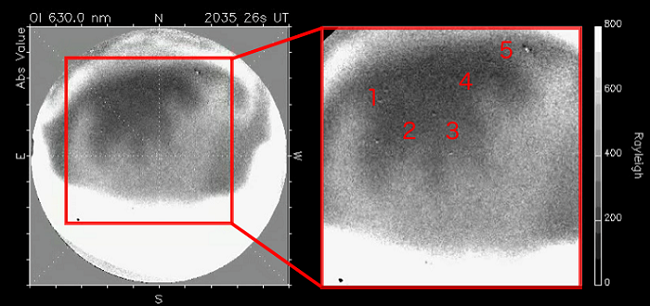September 2016 Issue
Research Highlights
Space physics: Confirming the structure and shape of polar cap patches
Large-scale patches of enhanced electron density (plasma) are often found in the polar ionosphere - about 80 to 1000 kilometers above the Earth's surface. These 'polar cap patches' can last for hours, cover huge areas and travel quickly, and their presence can disrupt satellite communication links.
Scientists have recently begun collecting high definition, two-dimensional images of the patches using 'all-sky airglow imagers' (ASI). These specialized instruments can image emissions from excited atomic oxygen, allowing for the capture of plasma patches in greater detail.
Keisuke Hosokawa at the University of Electro-Communications in Tokyo and co-workers across Japan analyzed ASI images of ten different patches that occurred during a four-hour period over Longyearbyen in Norway in December 2013. Their observations prove for the first time that the patches exhibit specific structural qualities, as previously predicted by computer simulations1.
For example, the images allowed the team to visualize the gradients between the leading and trailing edges of the patches as they moved from day-side to night-side across the poles. The leading edge gradient was between two and three times steeper and more stable than the trailing edge.
Hosokawa's team then verified the presence of 'finger-like' structures on the trailing edge of each patch. They believe these fingers result from plasma restructuring due to disturbances moving through the plasma and mixing it. This activity makes the trailing edge more gradual in gradient and influences the shape and size of the whole patch.
Understanding patch instability, structure and shape may enable better predictions of space weather impacts on satellite communication links.
Reference
- Hosokawa, K., Taguchi, S., & Ogawa, Y. Edge of polar cap patches. Journal of Geophysical Research: Space Physics 121 (2016)




